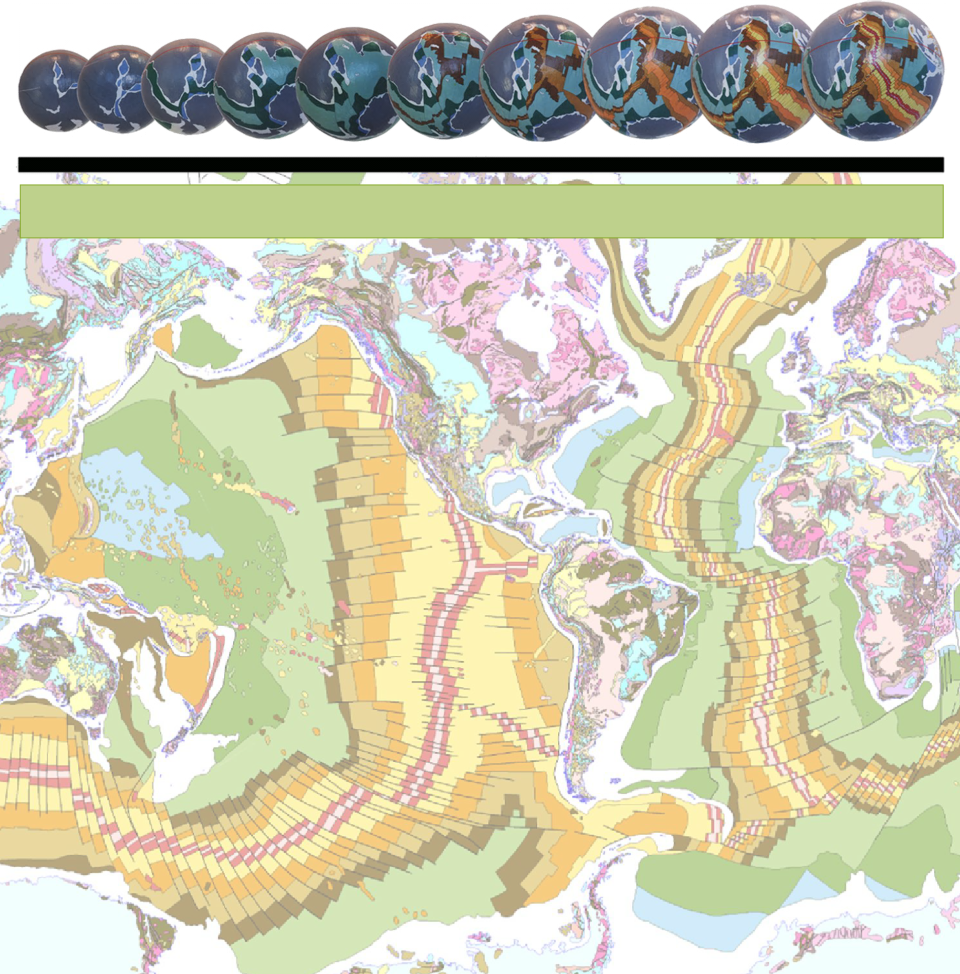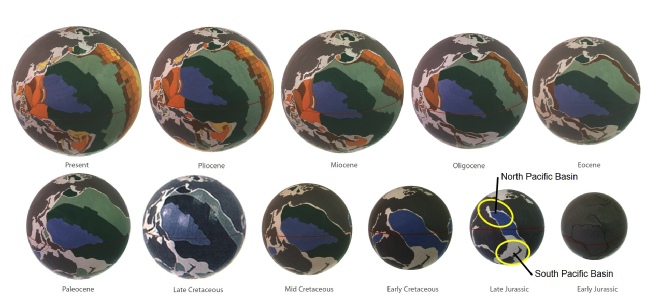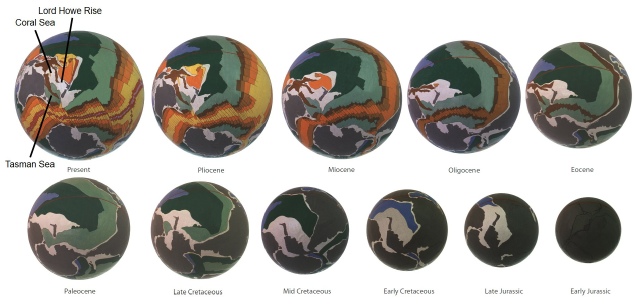

PACIFIC OCEAN
The Pacific Ocean occupies nearly half the surface area of the Earth and can be arbitrarily subdivided into North Pacific, Central Pacific, and South Pacific Ocean regions. In all plate tectonic reconstructions, the precursor to the Pacific Ocean was a much larger ancient Panthalassa Ocean. This largely hypothetical early-
On all plate tectonic reconstructions, the North American continent progressively overrides the eastern North Pacific Ocean region. This supposedly occurs during a westward displacement of the North American continent during opening of the North Atlantic Ocean. The North Pacific Ocean spreading ridge is then inferred to have been entirely overridden and subsequently dislocated beneath the Pacific margin of the North American continent.

North Pacific Ocean Expansion Tectonic small Earth spreading history, extending from the present-
In contrast, on an Expansion Tectonic Earth an expansive pre-

South Pacific Ocean Expansion Tectonic small Earth spreading history, extending from the present-
Both of these marine basins progressively opened to the south and north, along the west coasts of North and South America respectively. These basins then merged to form a single Pacific Ocean basin during the mid-
On an Expansion Tectonic Earth, the subsequent evolution of the North and South Pacific Oceans involved a period of rapid northeast to southwest crustal extension and opening between North America, South America, and Australia. By the late-
Throughout the Mesozoic Era the North Pacific Ocean underwent a very rapid enlargement, with spreading axes extending southeast into the South Pacific region. This spreading and mid-
During the mid-
Development of the Pacific Ocean on an Expansion Tectonic Earth during the Cenozoic Era is characterised by the initiation and rapid development of symmetric-
The opening and formation of the Pacific Ocean on an Expansion Tectonic Earth differs slightly to each of the other oceans. Because of the long period of time involved in opening the Pacific Ocean, the large area of older seafloor crust in the North Pacific region has been subject to considerable crustal stretching and distortion as a result of the changing surface curvature of the Earth. This changing surface curvature is generally absorbed as extension within the thin seafloor crust, but it also gave rise to complex plate interaction and jostling between and along adjoining plates, in particular between the various seafloor and continental plate margins.
Between the North Pacific Ocean plate and the Australian, South East Asian, and Chinese plates, complex crustal interaction has also given rise to the South East Asian island-